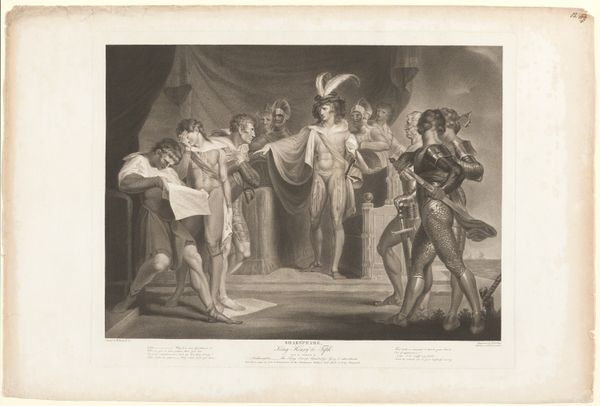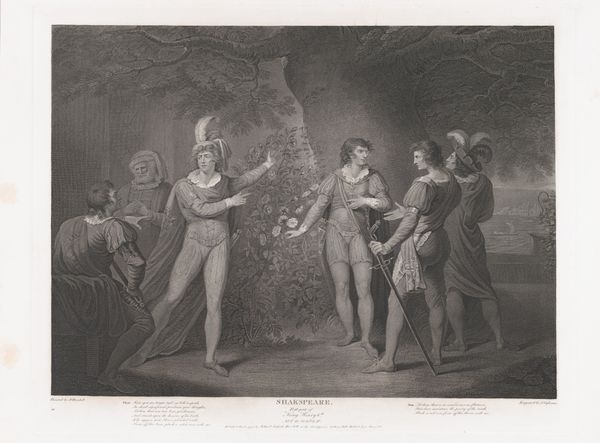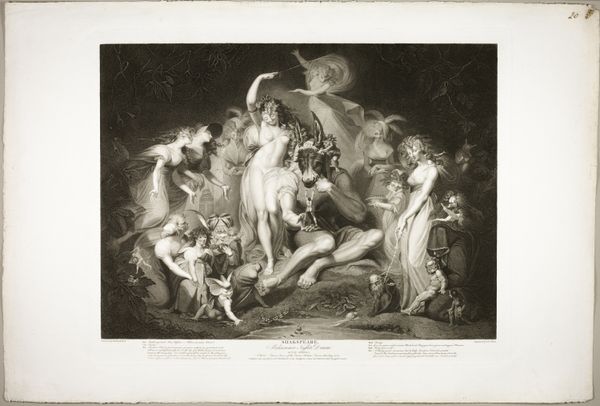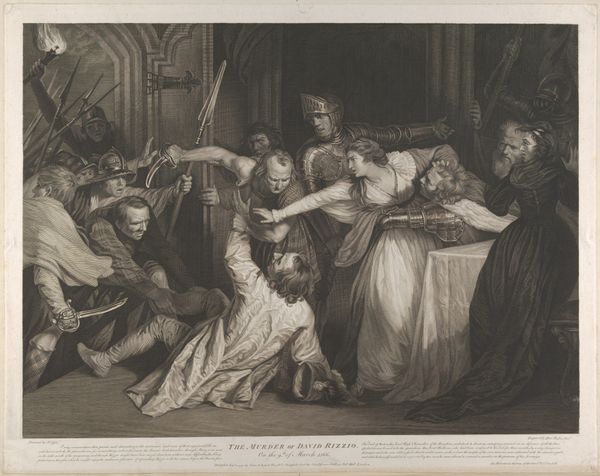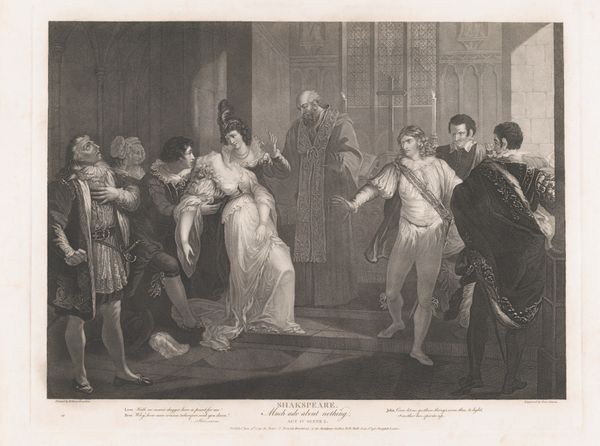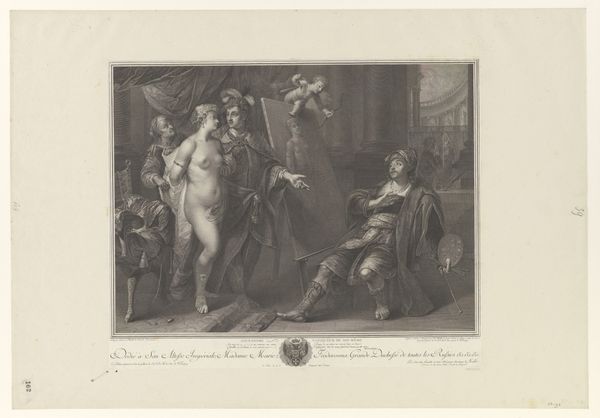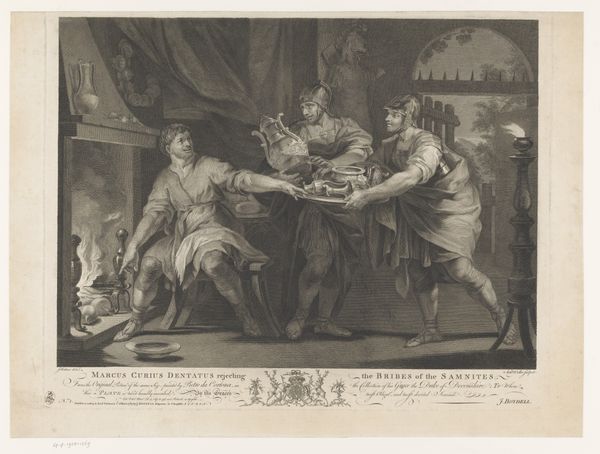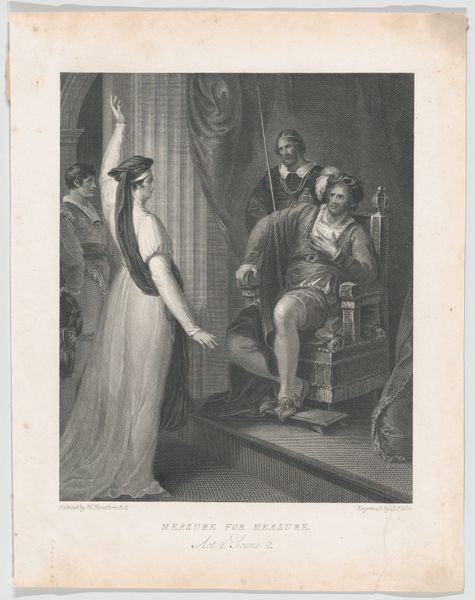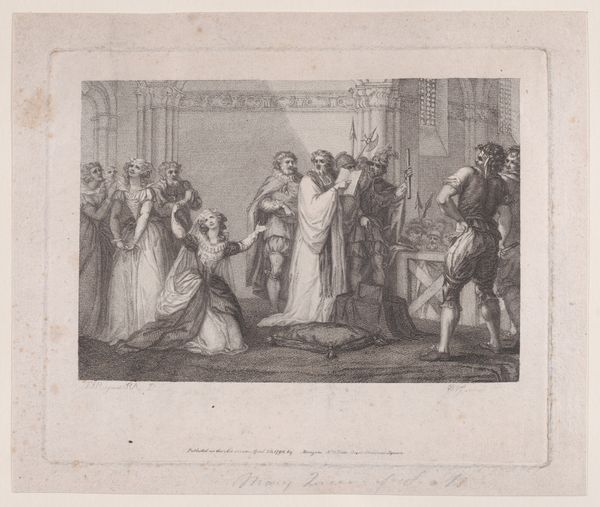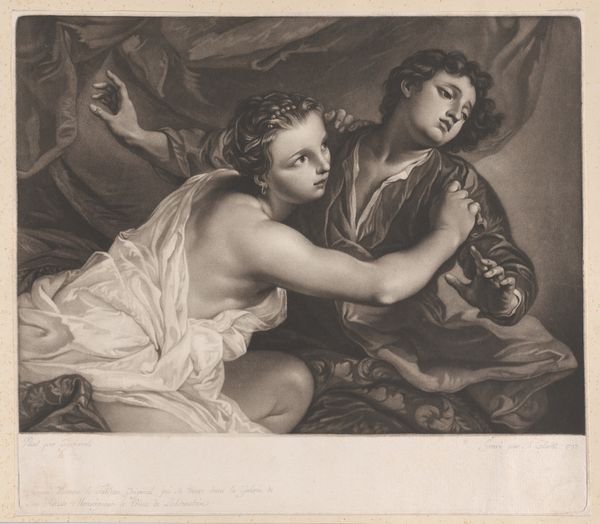
Before the Duke's Palace–Rosalind, Celia, Orlando, the Duke & Attendants (Shakespeare, As You Like It, Act 1, Scene 2) 1800 - 1852
0:00
0:00
drawing, print, etching, engraving
#
portrait
#
drawing
#
narrative-art
# print
#
etching
#
romanticism
#
men
#
history-painting
#
engraving
Dimensions: image: 17 3/16 x 23 3/8 in. (43.6 x 59.4 cm) sheet: 22 1/16 x 28 1/16 in. (56 x 71.3 cm)
Copyright: Public Domain
Editor: This print, titled "Before the Duke's Palace" by William Satchwell Leney, depicts a scene from Shakespeare's "As You Like It." I’m struck by the theatrical poses and the way the figures are arranged, almost like a stage tableau. What symbolism do you see at play here? Curator: The theatricality itself is significant. The image operates as a visual echo chamber. Consider the keys being exchanged; what do keys typically represent in visual language? Editor: Access? Authority? Control? Curator: Exactly! The characters aren’t merely exchanging objects, but control, permission. Note too the garland worn by Orlando: victory, status… but also fragility, as flowers wither. And observe Celia’s watchful presence, a shadow self perhaps? What implications arise from viewing her with such closeness to Rosalind? Editor: So the figures aren't just illustrations but loaded with symbolic weight connected to love, loss, or the characters’ internal conflicts within the play? Curator: Precisely. Leney isn’t just illustrating a scene. He’s choosing specific symbols – keys, garlands, stances, groupings–to evoke Shakespeare's exploration of exile and identity through visual forms accessible to a wide 19th-century audience already fluent in this iconographic language. Even the neoclassical architecture functions as an element invoking specific cultural memory of civic life. Editor: This makes me consider how contemporary audiences might interpret these now slightly obscure references. Thanks, this has provided insight into decoding symbolic imagery and its link to history! Curator: And how the symbols themselves shift and reshape our cultural memory, demonstrating the ever-evolving meanings attached to them, especially across diverse mediums.
Comments
No comments
Be the first to comment and join the conversation on the ultimate creative platform.

